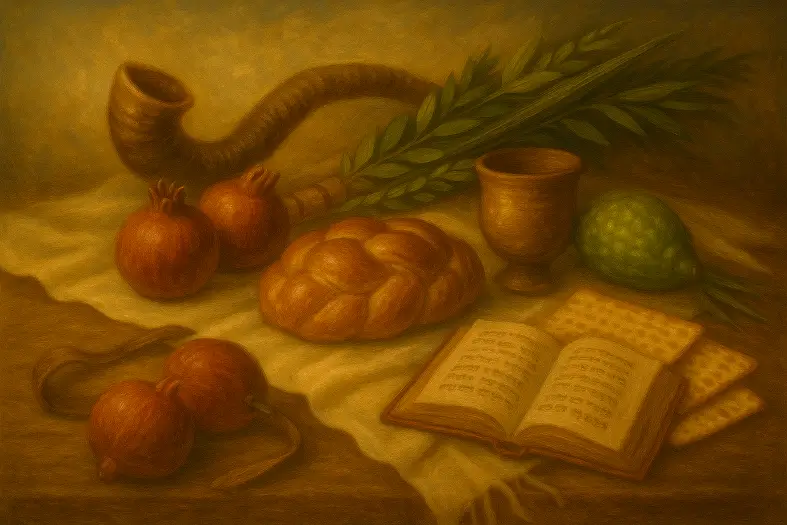


On each of the seven days of Sukkot, Israel must bring musaf offerings, beginning with thirteen bulls and decreasing daily, along with rams, lambs, and a goat for a sin offering.
The Sukkot musafim are the most elaborate of all festival offerings. Rambam (Hilchot Temidin uMusafin 10:1–3) details the pattern: thirteen bulls on the first day, then twelve, eleven, and so forth until seven on the seventh day — seventy bulls in total. Two rams and fourteen lambs were offered each day, plus one goat as a chatat.
The Talmud (Sukkah 55b) explains that the seventy bulls correspond to the seventy nations of the world, symbolizing Israel’s role in securing blessing and atonement for all humanity. Sefer HaChinuch (Mitzvah 324) adds that this reflects Hashem’s universal providence and Israel’s duty to channel holiness to the nations. Rashi (Num. 29:12) notes the decreasing number of bulls reflected a gradual lessening of the nations’ power. Midrash Bamidbar Rabbah (21:24) emphasizes that these offerings brought peace to the world, showing Sukkot’s global dimension.
Commentary & Classical Explanation:
Contrast with Yom Kippur Musaf (Mitzvah 389):
Parallel to Shemini Atzeret Musaf (Mitzvah 391):


Mitzvot related to the Jewish festivals — their observance, rituals, prohibitions, and spiritual significance. This includes Torah-commanded holidays like Pesach, Shavuot, and Sukkot, as well as rabbinic celebrations such as Purim and Chanukah.
Concerns the Beit HaMikdash, korbanot (offerings), and priestly service.
Mitzvot that strengthen communal life — showing up, participating, supporting, and belonging. Community is where holiness is shared, prayers are multiplied, and responsibility becomes collective.
Represents Emunah—the deep, inner trust in Hashem’s presence, oneness, and constant involvement in our lives. This badge symbolizes a heartfelt connection to G-d, rooted in belief even when we cannot see. It is the emotional and spiritual core of many mitzvot.
Signifies awe and reverence toward Hashem—living with awareness of His greatness and presence.
Mitzvot that define and deepen the relationship between a person and their Creator. These include commandments involving belief, prayer, Shabbat, festivals, sacrifices, and personal holiness — expressions of devotion rooted in divine connection.

Dive into mitzvot, prayer, and Torah study—each section curated to help you learn, reflect, and live with intention. New insights are added regularly, creating an evolving space for spiritual growth.

Explore the 613 mitzvot and uncover the meaning behind each one. Discover practical ways to integrate them into your daily life with insights, sources, and guided reflection.

Learn the structure, depth, and spiritual intent behind Jewish prayer. Dive into morning blessings, Shema, Amidah, and more—with tools to enrich your daily connection.

Each week’s parsha offers timeless wisdom and modern relevance. Explore summaries, key themes, and mitzvah connections to deepen your understanding of the Torah cycle.